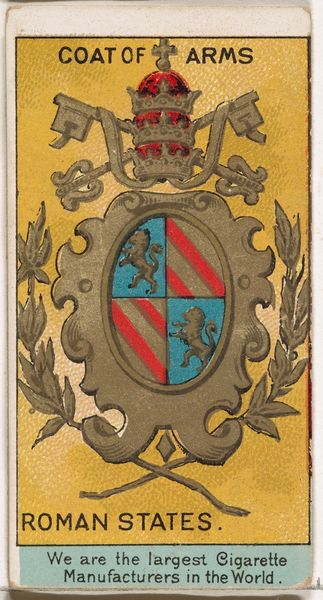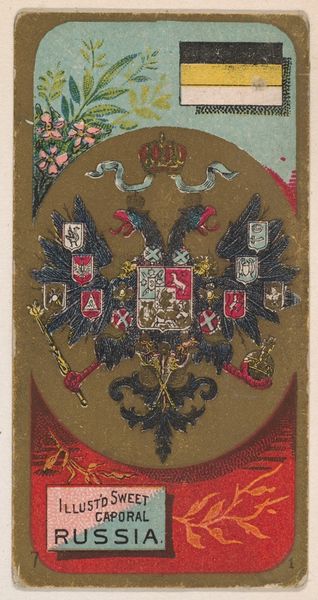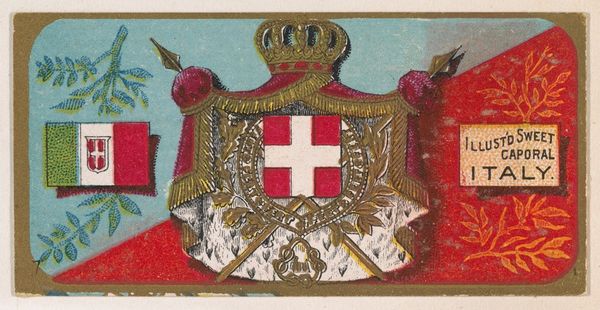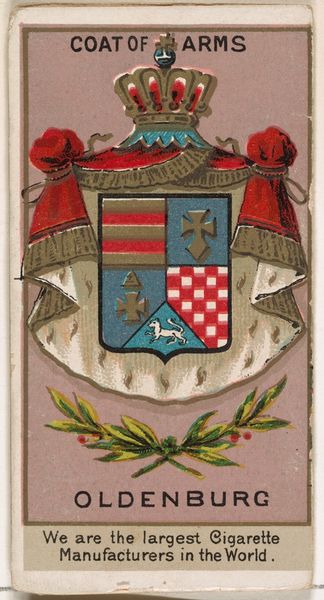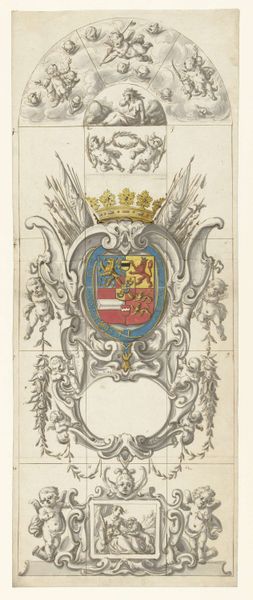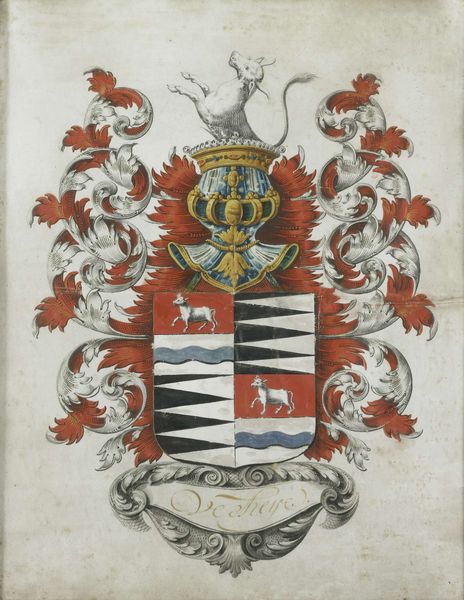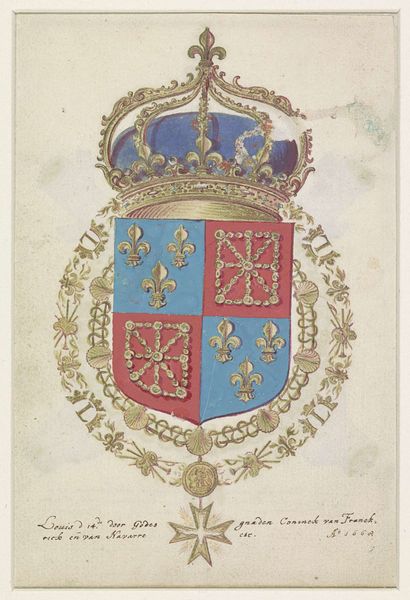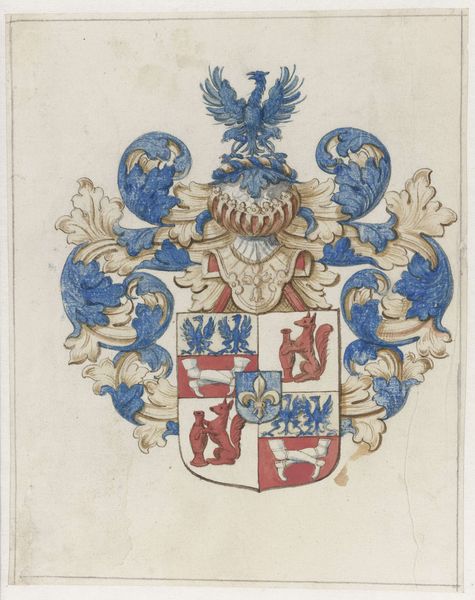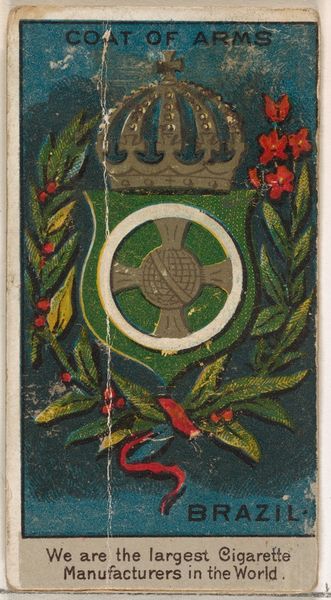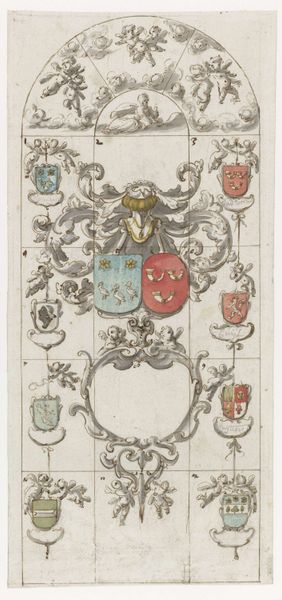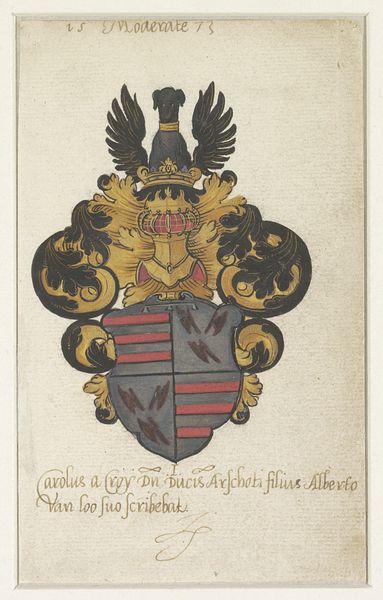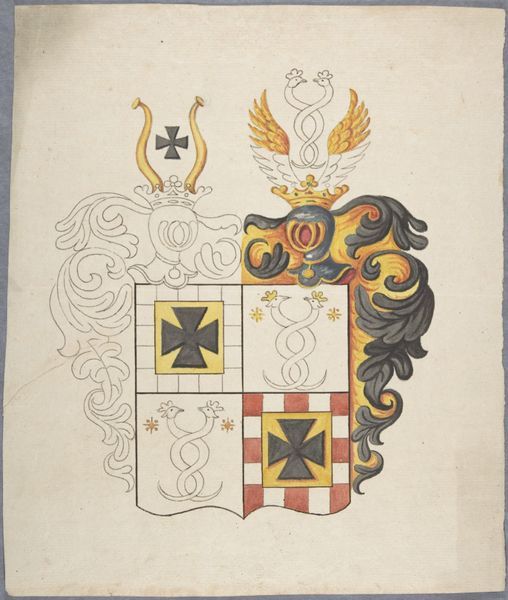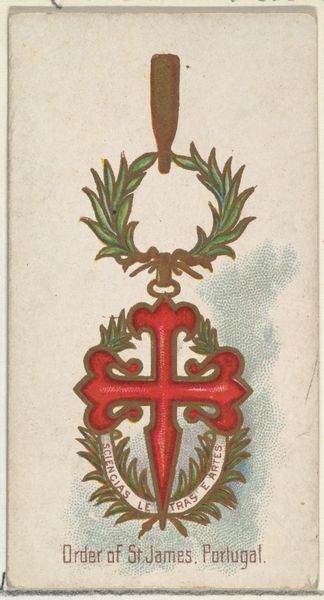
Governor General of Canada, from the Rulers, Flags, and Coats of Arms series (N126-2) issued by W. Duke, Sons & Co. 1888
0:00
0:00
drawing, graphic-art, print
#
portrait
#
drawing
#
graphic-art
# print
#
coloured pencil
#
history-painting
Dimensions: Sheet: 2 3/4 × 4 1/4 in. (7 × 10.8 cm) Sheet (folded): 2 3/4 × 1 7/16 in. (7 × 3.6 cm)
Copyright: Public Domain
Editor: So, this little card is from 1888, by W. Duke, Sons & Co., and it's titled "Governor General of Canada, from the Rulers, Flags, and Coats of Arms series." It’s a small print. I'm really intrigued by its function as both a piece of graphic art and an advertisement...what do you make of its dual purpose? Curator: Well, let's consider the context. This card, mass-produced by a cigarette company, reflects the era's burgeoning consumer culture. The printing process itself – likely lithography – allowed for vibrant colours and relatively cheap production. The image becomes a commodity, tied directly to the consumption of tobacco. It’s fascinating how symbols of power, like the Coat of Arms, are reproduced and distributed as incentives to purchase cigarettes. Editor: That’s a really interesting point. So, the value isn't just in the image itself, but also in what it's attached to, like the labor and the means of distribution. Curator: Exactly. Think about the workers involved: from the tobacco farmers to the factory laborers printing these cards. This image naturalizes a certain hierarchy and way of consumption through its easy circulation and cheap means of production, even obscuring the labor required to produce it in the first place. Is this kind of reproduction honoring Canadian governance or leveraging it for profit? Editor: It sounds like the focus isn't really about "high art" but how art, even something like this, operates within larger systems. I never considered all of that. Curator: Precisely! This small card becomes a window into understanding the relationships between production, consumption, and power in the late 19th century. We’ve revealed how its seemingly simple image reflects deeper social and economic realities of its time. Editor: Thanks! I see it in a totally new light now.
Comments
No comments
Be the first to comment and join the conversation on the ultimate creative platform.
